Do you have a question about the Panasonic TH-65EQ1W and is the answer not in the manual?
Details critical safety warnings regarding electrical shock and product handling.
Compliance notices for Canada and trademark credits for software used in the product.
Provides essential warnings about electrical shock, moisture, heat sources, and electromagnetic fields.
Instructions on how to safely replace the fuse in the moulded power plug.
Guidelines for safe installation, including weight support, ventilation, and environmental conditions.
Covers safe operation practices, handling of damaged units, and preventing electrical shock.
Details precautions for ventilation, corrosive environments, moving the unit, and battery handling.
Covers installation location, environmental limits, ventilation space, and cable connection advice.
Guides on connecting the AC cord and turning the unit on using the main power button.
Steps for initial setup, including language selection and display orientation.
Guide on how to display, select, set, and exit the on-screen menu.
Overview of the main menu sections available for adjustment.
Steps for adjusting position items and resetting to defaults.
Covers output selection, balance, sound modes, bass, treble, and surround settings.
Guide to operating the picture menu and selecting picture modes like Standard, Vivid, etc.
Overview of key settings within the Setup menu.
Configures initial input, startup behaviour, volume, and power-on screen delay.
Details power management modes (On, Custom, Input Detection) for power saving.
Explains power management for HDMI, DVI-D, PC inputs, and power save features.
Enables HDMI-CEC and describes device control via HDMI 1/2 terminals.
Explains interlocking operations between the display and connected HDMI-CEC devices.
Explains aligning multiple displays for a combined image and scaling settings.
Covers network control enabling and detailed LAN setup configurations.
Configuration options for the USB media player, including playback modes and file handling.
Details requirements for network connection and basic LAN setup.
Explains command transmission via LAN using Protocol 1 and WEB control password.
Explains command transmission via LAN using Protocol 2 and password.
Lists supported commands for controlling the unit via PJLink protocol.
Covers PJLink security authentication and supported software like Multi Monitoring.
Steps for connecting the computer to the LAN and preparing the web browser.
Details requirements for web browser control and necessary computer setup.
Guides on accessing web control, authentication, and changing passwords.
Describes the different pages available in the web browser interface.
Covers detailed control functions and network configuration within the web interface.
Configures status notifications to PC and sets SNMP parameters.
Overview of the Crestron Connected interface, including tools, info, and basic controls.
Describes operating the display via a web browser remote control interface.
Explains the USB media player function and its single vs. multi-player modes.
Overview of Content Management Software functions for schedule playback.
Details connection procedures and settings for the HDMI-CEC function.
Explains interlocking operations between the display and connected devices via HDMI-CEC.
Instructions for cloning data to USB memory and notes on supported devices.
Steps for copying data from USB memory to the display.
Guides on setting up LAN data cloning and selecting destination displays.
Steps for executing LAN data cloning and exiting the process.
Troubleshooting guide for common picture and sound issues, including simple checks.
Troubleshooting steps for power-related issues and remote control operation problems.
Troubleshooting for controller ID, picture cutoff, unit overheating, and input issues.
Details critical safety warnings regarding electrical shock and product handling.
Compliance notices for Canada and trademark credits for software used in the product.
Provides essential warnings about electrical shock, moisture, heat sources, and electromagnetic fields.
Instructions on how to safely replace the fuse in the moulded power plug.
Guidelines for safe installation, including weight support, ventilation, and environmental conditions.
Covers safe operation practices, handling of damaged units, and preventing electrical shock.
Details precautions for ventilation, corrosive environments, moving the unit, and battery handling.
Covers installation location, environmental limits, ventilation space, and cable connection advice.
Guides on connecting the AC cord and turning the unit on using the main power button.
Steps for initial setup, including language selection and display orientation.
Guide on how to display, select, set, and exit the on-screen menu.
Overview of the main menu sections available for adjustment.
Steps for adjusting position items and resetting to defaults.
Covers output selection, balance, sound modes, bass, treble, and surround settings.
Guide to operating the picture menu and selecting picture modes like Standard, Vivid, etc.
Overview of key settings within the Setup menu.
Configures initial input, startup behaviour, volume, and power-on screen delay.
Details power management modes (On, Custom, Input Detection) for power saving.
Explains power management for HDMI, DVI-D, PC inputs, and power save features.
Enables HDMI-CEC and describes device control via HDMI 1/2 terminals.
Explains interlocking operations between the display and connected HDMI-CEC devices.
Explains aligning multiple displays for a combined image and scaling settings.
Covers network control enabling and detailed LAN setup configurations.
Configuration options for the USB media player, including playback modes and file handling.
Details requirements for network connection and basic LAN setup.
Explains command transmission via LAN using Protocol 1 and WEB control password.
Explains command transmission via LAN using Protocol 2 and password.
Lists supported commands for controlling the unit via PJLink protocol.
Covers PJLink security authentication and supported software like Multi Monitoring.
Steps for connecting the computer to the LAN and preparing the web browser.
Details requirements for web browser control and necessary computer setup.
Guides on accessing web control, authentication, and changing passwords.
Describes the different pages available in the web browser interface.
Covers detailed control functions and network configuration within the web interface.
Configures status notifications to PC and sets SNMP parameters.
Overview of the Crestron Connected interface, including tools, info, and basic controls.
Describes operating the display via a web browser remote control interface.
Explains the USB media player function and its single vs. multi-player modes.
Overview of Content Management Software functions for schedule playback.
Details connection procedures and settings for the HDMI-CEC function.
Explains interlocking operations between the display and connected devices via HDMI-CEC.
Instructions for cloning data to USB memory and notes on supported devices.
Steps for copying data from USB memory to the display.
Guides on setting up LAN data cloning and selecting destination displays.
Steps for executing LAN data cloning and exiting the process.
Troubleshooting guide for common picture and sound issues, including simple checks.
Troubleshooting steps for power-related issues and remote control operation problems.
Troubleshooting for controller ID, picture cutoff, unit overheating, and input issues.
| Response time | 8 ms |
|---|---|
| Display diagonal | 65 \ |
| Display brightness | 350 cd/m² |
| Display technology | VA |
| Native aspect ratio | 16:9 |
| LED backlighting type | Direct-LED |
| Contrast ratio (dynamic) | 50000:1 |
| Contrast ratio (typical) | 4000:1 |
| Display number of colors | 1.06 billion colors |
| Display diagonal (metric) | 163.9 cm |
| Active display area (W x H) | 1428 x 803 mm |
| DisplayPorts quantity | - |
| Ethernet LAN data rates | 10, 100, 1000 Mbit/s |
| VGA (D-Sub) input ports | 1 |
| RMS rated power | 20 W |
| Orientation | Horizontal/Vertical |
| Product color | Black |
| Product design | Digital signage flat panel |
| Bezel width (side) | 13.5 mm |
| Placement supported | Indoor |
| Bezel width (bottom) | 14.5 mm |
| Panel mounting interface | 400 x 400 mm |
| Purpose | Universal |
| HDCP version | 2.2 |
| Operating hours (hours/days) | 18/7 |
| AC input voltage | 220 - 240 V |
| AC input frequency | 50 - 60 Hz |
| Power consumption (off) | 0.3 W |
| Power consumption (standby) | 0.5 W |
| Power consumption (typical) | 185 W |
| Package depth | 280 mm |
| Package width | 1655 mm |
| Package height | 1078 mm |
| Package weight | 38000 g |
| Cables included | AC |
| Storage temperature (T-T) | -20 - 60 °C |
| Operating temperature (T-T) | 0 - 40 °C |
| Operating relative humidity (H-H) | 20 - 80 % |
| Depth | 82 mm |
|---|---|
| Width | 1459 mm |
| Height | 835 mm |
| Weight | 27000 g |


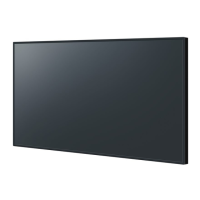
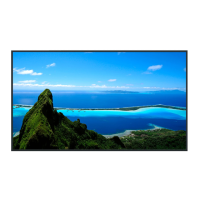

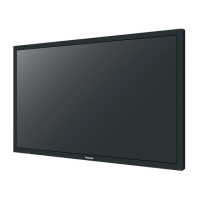
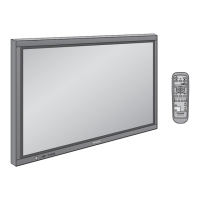


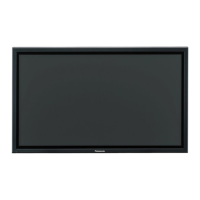
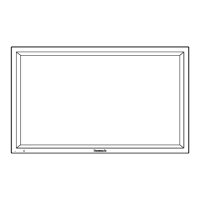
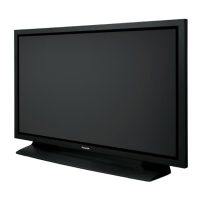
